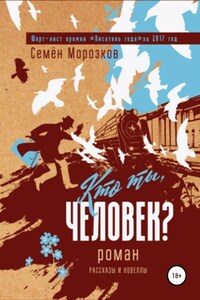William Collins
An imprint of HarperCollinsPublishers
1 London Bridge Street
London SE1 9GF
WilliamCollinsBooks.com
This eBook first published in Great Britain by William Collins in 2018
Copyright © Alex-Perry.com Ltd 2018
Cover image © Alamy
Cover design by Leo Nickolls
Maps by Martin Brown
Alex Perry asserts the moral right to be identified as the author of this work
A catalogue record for this book is available from the British Library
All rights reserved under International and Pan-American Copyright Conventions. By payment of the required fees, you have been granted the non-exclusive, non-transferable right to access and read the text of this e-book on-screen. No part of this text may be reproduced, transmitted, down-loaded, decompiled, reverse engineered, or stored in or introduced into any information storage and retrieval system, in any form or by any means, whether electronic or mechanical, now known or hereinafter invented, without the express written permission of HarperCollins.
Source ISBN: 9780008222109
Ebook Edition © February 2018 ISBN: 9780008222123
Version: 2018-02-01
To assist the English reader, I have used anglicised place names: Florence not Firenze, for example. By contrast, I have observed Italian custom when it comes to individuals’ names. Maria Concetta Cacciola, for instance, becomes Concetta, or ’Cetta, at the second mention. In another difference from Anglo-Saxon custom, Italian women retain their father’s surname after marriage. Thus Lea Garofalo kept her name after she married Carlo Cosco but the couple’s daughter was called Denise Cosco.
The symbol of Milan is a giant serpent devouring a screaming child.1 The first city of northern Italy has had other totems: a woolly boar, a golden Madonna and, more recently, the designer labels that make Milan the fashion capital of the world. But the eight-hundred-year-old image of a curled snake sinking its fangs into the writhing, blood-soaked body of an infant has remained its most popular emblem, adorning flags and bas reliefs on the city walls, the Alfa Romeo badge and the Inter Milan jersey. It’s an oddly menacing standard for a people more normally associated with family and food, and a strangely crude one for a city whose artistry reaches the sublime heights of da Vinci’s The Last Supper – and most Milanese generally profess ignorance of its meaning. In more candid moments, however, some will confess they suspect that the image owes its endurance to the way it illuminates a dark truth at the heart of their city: that the dynamism and accomplishment for which Milan is famous depends, among other things, on who you are prepared to destroy.
In the four days they spent in Milan in late November 2009 before her father killed her mother, then erased any trace of her from the world, Denise Cosco could almost believe her family had transcended its own special darkness. Denise was seventeen. Her mother was Lea Garofalo, a thirty-five-year-old mafioso’s daughter, and her father was Carlo Cosco, a thirty-nine-year-old cocaine smuggler. Lea had married Carlo at sixteen, had Denise at seventeen, witnessed Carlo and his brother kill a man in Milan at twenty-one and helped send Carlo to the city’s San Vittore prison at twenty-two. Denise had grown up on the run. For six years, from 1996 to 2002, Lea had hidden herself and her daughter away in the narrow, winding alleys of the medieval town of Bergamo in the foothills of the Alps. Lea had made it a game – two southern girls hiding out in Italy’s grey north – and in time the two had become each other’s worlds. When they walked Bergamo’s cobbled streets, an elfin pair holding hands and curling their dark hair behind their ears, people took them for sisters.
One night in 2000, Lea glanced out of their apartment to see her old Fiat on fire. In 2002, after a scooter was stolen and their front door set alight, Lea told Denise she had a new game for them – and walked hand-in-hand with her ten-year-old daughter into a carabinieri station where she announced to the startled desk officer that she would testify against the mafia in return for witness protection. From 2002 to 2008, mother and daughter had lived in government safe houses. For the past eight months, for reasons Denise understood only in part, they’d been on their own once more. Three times Carlo’s men had caught up with them. Three times Lea and Denise had escaped. But by spring 2009, Lea was exhausted, out of money and telling Denise they were down to two last options. Either they somehow found the cash to flee to Australia, or Lea had to make peace with Carlo.
If neither was likely, reconciliation with Carlo at least seemed possible. The state had dropped its efforts to prosecute him using Lea’s evidence, and while that infuriated her, it also meant she was no longer a threat to him. In April 2009, she sent her husband a message saying they should forgive and forget, and Carlo appeared to agree. The threats stopped and there were no more burned-out cars. Carlo began taking Denise on trips around the old country in Calabria. One September night he even talked Lea into a date and they drove down to the coast, talking into the early hours about the summer they’d met, all those years before.








